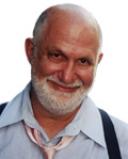Addiction
The Seductive, But Dangerous, Allure of Gabor Maté
Gabor Maté is admirable, but leads us down the wrong road
Posted December 5, 2011 Reviewed by Lybi Ma
This post was written with Alan Cudmore.
Gabor Maté is a distinguished figure in the addiction field, the author of "In the Realm of Hungry Ghosts." Maté is revered for his humane medical work with inner-city drug addicts in Vancouver, centering on the Insite injection center (where users are given works to inject their own drugs) and Portland Hotel (Community Health) Society, which provides housing and lives, really, for the most downtrodden Vancouverites. Thank God there is such a service; bless Maté for his work there. (Disclosure: I visited and conducted workshops at Insite and PHS in January.)
Maté maintains a human communion with his patients. He does so by describing his own maladies, his ADD and shopping addiction, which he analogizes to severe drug addictions. Fair enough. It is important to recognize our common humanity (although some think that as a successful middle-class physician Maté is stretching this connection). But, for Maté, they are all brain diseases.
Beyond this, Maté has a theory of addiction rooted in childhood abuse. Maté combines his clinical experiences with brain research claiming the source of addiction is in formative brain chemicals. For Maté, the first five years of life (and even the environment in the womb) dictate the likelihood of addiction. He then relates this theoretical point of view to studies connecting stress, abuse and lack of love and attachment to not only life problems (as they have been for some time) but to deficiencies in people's ability to process endorphins and dopamine—the neurochemicals in our bodies that provide us with both pleasure and pain relief.
Maté then claims that addiction results from deficiencies (lack of receptors) in these neuro-systems that cause people with addictions to self-medicate to replace their missing neurostimulation. In this sense, people are addicted to drugs as replacements for the brain chemicals their own bodies fail to process. Those addicted to things other than drugs are reacting to the same internal chemistry, but with different external stimulants.
It is important to respect Maté's work with individuals living with addictions. For this reason, people who work with clients from a harm reduction perspective—that is, they accept people as they are, and seek to help those in need—deeply admire Maté. In addition, Maté's exploring the root causes of addiction may in some sense represent progress out of a deterministic disease concept of addiction because it broadens the range of experiences that can lead to addiction and through which addiction expresses itself.
Unfortunately, however, Maté is fundamentally proposing a reductionist vision of addiction, where abuse history and posited biochemical changes are now the essential causes of people's self-destructive action. It is not enough to say that this model is highly conjectural. It also isn't true, that is, it makes little sense of the data. Vincent Felitti conducted a huge epidemiological study on early childhood experiences. He found that only a tiny group (3.5 percent) of people with four or more adverse childhood experiences became involved in injection drug use. So Maté's model is highly undiscriminating. The percentage of addicts increases somewhat with the number of adverse experiences. Even so, this relatively minor elevation in no way presupposes the damage is caused biochemically, rather than simply by detrimental psychological consequences and deeply dysfunctional homes and environments.
One counterargument in favor of Maté's position might be that injection drug use is low among this population because so few people who have experienced abuse are exposed to injectable drugs. But this argument does not hold either. Felitti has included alcohol in his research. And, with drinking, the rates of dependence follow the same trajectory depending on the number of adverse childhood experiences but are still not much higher for abuse victims, 16 percent.
Beyond this failure to find the distinct differences in addiction among abuse victims that Maté proposes, we must account for people's natural tendency to overcome abuse and addictive experiences. We might, after all, study what are the protective effects for the other 96.5 percent of abuse sufferers that prevent them from injecting drugs, and the 84 percent who do not become alcohol dependent. And, on top of this, what about the strong tendency that has been revealed, time and again, for people with addictions to naturally remediate. According to the National Institute on Alcohol Abuse and Alcoholism, three-quarters of people who were at one time alcohol-dependent fully recover, the large majority without treatment, many without ceasing to drink.
In fact, at the deepest level, Maté's views limit our approaches to, our understanding of, and even our respect for people living with addiction. Rather than expand our understanding of addiction, his views harm our ability to respond to it. For one thing, focusing solely on one risk factor and one very questionable source of addiction has led Maté to posit a potential cure for addiction, Ayahuasca, a brew made from South-American spirit-vine that is claimed to open the human consciousness for a higher degree of introspection. In fact, Maté's reliance on this treatment further confuses levels of analysis. Does introspection really remedy the absence of neuro-receptors in some straightforward manner?
In this context, that harm reductionists embrace Maté is extremely troubling. For, contrary to popular beliefs in these circles, Maté is actually diverting the addiction field from a more comprehensive and practicable view of addiction. Maté's embrace of Ayahuasca does not support the broad harm reduction goals of expanding the resources available to people with addictions like those in Vancouver, of developing their skills for functioning in their worlds, and of holding up the hope that they can improve their lives. Instead, this approach is reductive, monosyllabic, and really no different than the disease camp's fool's gold quest for an addiction vaccine in the forlorn hope that we can remedy addiction without improving human lives.
A true harm reductionist should accept a wide range of contributors in the development of addiction, but particularly those that human agency—and particularly the person who is addicted himself or herself—can address and improve. Without this sense, we are lost.
As to a systematic test of the theory of epigenetics and trauma in the American Journal of Psychiatry: "Findings from this epidemiological analysis of the epigenetic effects of early-life stress do not support the hypothesis of robust changes in DNA methylation in victimized young people."
Addendum: Here's a synopsis from a Reddit AMA:
Question from Reddit Reader: I read an article you (Dr. Peele) wrote recently that questioned the validity of statements connecting addiction to early childhood trauma. How big a role, in your opinion, does early childhood experience play in later substance issues?
Answer from Stanton Peele: Thanks for the question. I have been notably at odds with Dr. Gabor Mate lately, who is one of those who trace every case of addiction back to childhood trauma. I oppose that for three reasons:
- It's inaccurate: although abuse and trauma are bad for people, most addicts weren't traumatized as kids; most traumatized people don't become addicts
- I really disrespect how Mate goes from there. If the trauma isn't apparent, then you search for it, in which case it will always be found, or else made up
- In Mate's hands (and he's one of many) it becomes a new disease theory,since abuse and trauma aren't erasable (and Mate has these elaborate, Rube Goldberg connections proving they're embedded in your brain) their addictive effects can never dissipate, which is (a) untrue, (b) unhelpful, and just one more burden against overcoming addiction. Our whole approach is to emphasize the truth that most people leave addiction behind and use that reality to inspire people.
Reply from Reddit Reader: Thank you for your answer. I am very fond of your writing and Dr. Mate's, and I can see your point very clearly about childhood trauma being the new disease theory. It shifts somewhat from "disease" to "disability", which is, in my opinion, wonderful for erasing stigma, but not very empowering for the addicted person. I appreciate your response. I have been very curious about this. Thank you, again, Dr. Peele.




